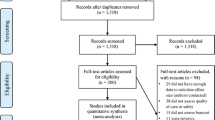Abstract
OBJECTIVE: To examine the ethical issues raised by physicians performing, for skill development, medically nonindicated invasive medical procedures on newly dead and dying patients.
DESIGN: Literature review; issue analysis employing current normative ethical obligations, and evaluation against moral rules and utilitarian assessments manifest in other common perimortem practices.
RESULTS: Practicing medical procedures for training purposes is not uncommon among physicians in training. However, empiric information is limited or absent evaluating the effects of this practice on physician competence and ethics, assessing public attitudes toward practicing medical procedures and requirements for consent, and discerning the effects of a consent requirement on physicians’ clinical competence. Despite these informational gaps, there is an obligation to secure consent for training activities on newly and nearly dead patients based on contemporary norms for informed consent and family respect. Paradigms of consent-dependent societal benefits elsewhere in health care support our determination that the benefits from physicians practicing procedures does not justify setting aside the informed consent requirement.
CONCLUSION: Current ethical norms do not support the practice of using newly and nearly dead patients for training in invasive medical procedures absent prior consent by the patient or contemporaneous surrogate consent. Performing an appropriately consented training procedure is ethically acceptable when done under competent supervision and with appropriate professional decorum. The ethics of training on the newly and nearly dead remains an insufficiently examined area of medical training.
Similar content being viewed by others
References
Kaldjian LC, Wu BJ, Jekel JF, Kaldjian EP, Duffy TP. Insertion of femoral-vein catheters for practice by medical house officers during cardiopulmonary resuscitation. N Engl J Med. 1999;341:2088–91.
Burns JP, Reardon FE, Truog RD. Using newly dead patients to teach resuscitation procedures. N Engl J Med. 1994;331:1652–5.
Iserson KV. Life versus death: exposing a misapplication of ethical reasoning. J Clin Ethics. 1994;5:261–3.
Orlowski JP, Kanoti GA, Mehlman MJ. The ethics of using newly dead patients for teaching and practicing intubation techniques. N Engl J Med. 1988;319:439–441.
Iserson KV. Requiring consent to practice and teach using the recently dead. J Emerg Med. 1991;9:509–10.
Brattlebo G, Seim SH. Teaching and training of invasive procedures on cadavers. Lancet. 1988;2:1078–9.
American Medical Association. Council on Ethical and Judical Affairs. Report 5-A-01. Available at: http://www.ama-assn.org/apps/pf_online/pf_online?f_n=browse&doc=policyfiles/CEJA/E-8.181.HTM&. Accessed August 16, 2002.
de Vos R, Oosterom L, Koster RW, de Haan RJ. Decisions to terminate resuscitation. Resuscitation. 1998;39:7–13.
Burns JP, Truog RD. Insertion of femoral-vein catheters for practice by medical house officers during cardiopulmonary resuscitation. [letter]. N Engl J Med. 2000;342:1369.
Lantos JD, Singer PA, Walker RM, et al. The illusion of futility in clinical practice. Am J Med. 1989;87:81–4.
Brody BA, Halevy A. Is futility a futile concept? J Med Philos. 1995;20:123–44.
Tsai E. Should family members be present during cardiopulmonary resuscitation? N Engl J Med. 2002;346:1019–21.
Gibart MK, Hutchinson CR, Cusimano MD, Regehr G. A computer-based trauma simulator for teaching trauma management skills. Am J Surg. 2000;179:223–8.
Wik L, Thowsen J, Steen PA. An automated voice advisory manikin system for training in basic life support without an instructor. A novel approach to CPR training. Resuscitation. 2001;50:167–72.
Kaufmann C, Liu A. Trauma training: virtual reality applications. Stud Health Technol Inform. 2001;81:236–41.
Colt HG, Crawford SW, Galbraith O III. Virtual reality bronchoscopy simulation: a revolution in procedural training. Chest. 2001;120:1333–9.
President’s Commission for the Study of Ethical Problems in Medicine and Bioemedical and Behavioral Research. Implementing Human Research Regulations. Washington, DC: U.S. Government Printing Office; 1983:39–40.
American Medical Association, Council on Ethical and Judicial Affairs. Code of Medical Ethics. Chicago, Ill: American Medical Association; 1997:30–1.
Annas G. The Rights of Patients. Carbondale, Ill: Southern Illinois University Press; 1989;234–36.
Kantor JE, Hoskins IA. Brain death in pregnant women. J Clin Ethics. 1993;4:308–14.
Murphy TF. Sperm harvesting and postmortem fatherhood. Bioethics. 1995;9:380–98.
American Medical Association. Autopsy: life’s final chapter. Available at: http://www.ama-assn.org/ama/pub/category/7635.html. Accessed May 14, 2002.
Meyers DW. The Human Body and the Law. 2nd Ed. Stanford, Calif: Stanford University Press; 1991.
McNamara RM, Monti S, Kelly JJ. Requesting consent for an invasive procedure in newly deceased adults. JAMA. 1995;274:128–9.
Benfield DG, Flaksman RJ, Tsun-Hsin L, Kantak AD, Kokomoor FW, Vollman JH. Teaching intubation skills using newly deceased infants. JAMA. 1991;265:2360–3.
Manifold CA, Storrow A, Rodgers K. Patient and family attitudes regarding the practice of procedures on the newly deceased. Acad Emerg Med. 1999;6:110–5.
Tahcakra S, Ho S, Lynch M, Newson R. Should doctors practise resuscitation skills on newly deceased patients? A survey of public opinion. J R Soc Med. 1998;91:576–8.
Olsen J, Spilger S, Windisch T. Feasibility of obtaining family consent for teaching cricothyrotomy on the newly dead in the emergency department. Ann Emerg Med. 1995;25:660–5.
Goldblatt AD. Don’t ask, don’t tell: practicing minimally invasive resuscitation techniques on the newly dead. Ann Emerg Med. 1995;25:86–90.
Wendler D, Dickert N. The consent process for cadaveric organ procurement. JAMA. 2001;285:329–33.
Clayton SA, Sivak SL. Improving the autopsy rate at a university hospital. Am J Med. 1992;94:423–8.
Ikels C. Kidney failure and transplantation in China. Soc Sci Med. 1997;44:1271–83.
Perkins HS, Supik JD, Hazuda HP. Autopsy decisions: the possibility of conflicting cultural attitudes. J Clin Ethics. 1993;4:145–54.
Perez LM, Shulman B, Davis F, et al. Organ donation in three major American cities with large Latino and black populations. Transplantation. 1988;46:553–7.
Sznajder JI, Zveibil FR, Bitterman H, Weiner P, Bursztein S. Central vein catheterization. Failure and complication rates by three percutaneous approaches. Arch Intern Med. 1986;146:259–61.
Bo-Linn GW, Anderson DJ, Anderson KC, McGoon MD. Percutaneous central venous catheterization performed by medical house officers: a prospective study. Cathet Cardiovasc Diagn. 1982;8:23–9.
Author information
Authors and Affiliations
Corresponding author
Rights and permissions
About this article
Cite this article
Berger, J.T., Rosner, F. & Cassell, E.J. Ethics of practicing medical procedures on newly dead and nearly dead patients. J GEN INTERN MED 17, 774–778 (2002). https://doi.org/10.1046/j.1525-1497.2002.11139.x
Issue Date:
DOI: https://doi.org/10.1046/j.1525-1497.2002.11139.x




